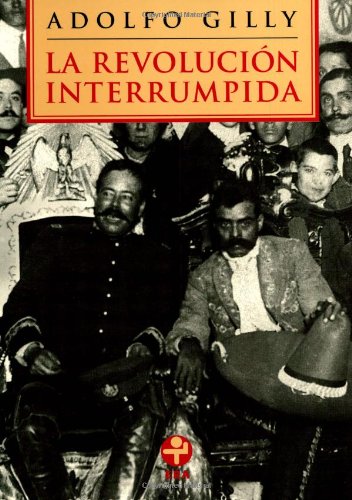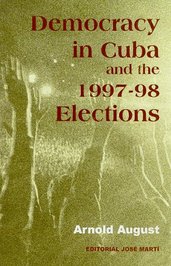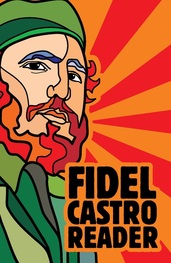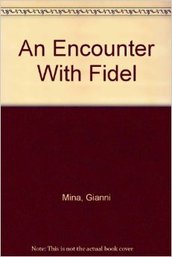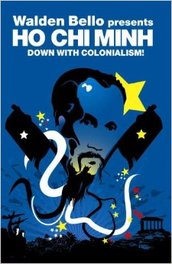In various posts on Cuba from June 12 to July 17, we have seen: that the conquest and peripheralization of Cuba led to the development of underdevelopment and to the establishment of an economy dependent on the exportation of sugar, tobacco and coffee, based principally on superexploited labor; that the war of independence of 1868-78, led by the Eastern landholding class, was unable to attain its principal goals of independence and the abolition of slavery; that José Martí emerged as a charismatic leader who established a clearer ideological foundation for the revolution, forging a dual focus of anti-imperialist national liberation and the social liberation of the people of all races and classes, and unifying the people for the launching a second war of independence in 1895; that the vision of Martí was eclipsed by the US intervention of 1898, which established the foundation for a neocolonial republic and the conversion of the Cuban bourgeoisie into a figurehead bourgeoisie under US tutelage; that the popular revolution became revitalized in the 1920s, further developing the vision of Martí in the context of the neocolonial republic, including the first steps, taken by Julio Antonio Mella, toward the synthesis of Martí with Marxism-Leninism; and that the Machado government responded to the renewed movement with harsh repression, transforming Cuban “democracy” into tyranny. Having devoted several recent posts to developments with respect to the relations of China and Russia with the Latin American process of political change and regional integration, we now return to the story of the historical development Cuban Revolution.
Beginning in 1930, new popular political actors emerged who were influenced by Marxism and were tied to the Cuban Communist Party (PCC), which had been established by Julio Antonio Mella and Carlos Baliño López in 1925. They brought the PCC to a position of prominence in the popular revolution during the period 1930-32. The most outstanding of the new leaders was Rubén Martínez Villena, who became the de facto leader of the Cuban Communist Party and the National Worker Confederation of Cuba (CNOC) after the exile and assassination of Mella and the assassination of Alfredo López (see “Julio A. Mella and the student movement” 7/8/2014 and “The Cuban Workers’ Movement of the 1920” 7/7/2014). Martínez Villena was a poet whose verses of 1923 had described the “moral blindness,” the “inertia of the soul,” and a “profound sensation of the impossible” that characterized the neocolonial republic, but they also evoked the sun that illuminates the revolutionary imperative that would cast aside the fatalistic sense of the impossible, driven by a “yearning for the salvation of the beloved land” (Arboleya 2008:96; Vitier 2006:125-28).
PCC, CNOC and other organizations tied to both called for a general strike for March 20, 1930. Under the slogan “Down with Machado,” the demands announced by PCC/CNOC included: the revocation of a government measure that declared CNOC illegal; the release of workers who had been detained for promoting the general strike; respect for the right of workers to organize and to strike; freedom of press and of association; the limit of the working day to eight hours; and measures in support of the unemployed, including an assistance payment, suspension of evictions and rent and debt payments, and aid for transportation, meals and lodging (Instituto de Cuba 1998:288; Vitier 2006:137).
In spite of the always present fear of reprisal, two hundred thousand workers and employees responded to the call, and the economic activities of Havana and various other cities were completely paralyzed for twenty-four hours. The success of the strike demonstrated the prestige that Martínez Villena and the PCC had attained among the popular classes, overcoming obstacles created by the extreme repression of the government (see “‘Democracy’ becomes tyranny” 7/17/2014). Further demonstrating that it was a strong political force, the PCC led mass demonstrations in Havana and in other cities in commemoration of the First of May (Instituto de Cuba 1998:289).
In addition to addressing concrete demands of workers, the platform of the PCC embraced without ambiguity the demands of peasants and agricultural workers for land and for the cessation of evictions. This enabled it to have success in the rural areas in the organization of leagues and committees of peasants and agricultural workers (Instituto de Cuba 1998:296).
The general strategy of the PCC was to form organizations of workers and peasants in urban and rural areas and to organize strikes and demonstrations in order to develop a popular, democratic and anti-imperialist revolution that would evolve to a socialist revolution led by the working class. Its goal was to establish a socialist government, controlled by popular councils composed of workers, peasants, soldiers and sailors (Instituto de Cuba 1998:287).
In addition to the PCC and CNOC, other organizations emerged during 1930-32. In the fall of 1930, the University Student Directorate (DEU) was formed, and it organized student demonstrations. On September 30, it issued a reformist manifesto, “To the People of Cuba,” which condemned the crimes of the Machado tyranny against workers, students, and political opponents; denounced the assassination of Julio Antonio Mella; criticized the corruption of the regime; expressed disapproval of the growth of the public debt; called for the restoration of constitutional democracy; embraced the principles of university reform; and called for a struggle against the Machado tyranny. Its insurrectional practices included strikes, student demonstrations, underground propaganda, sabotage, and execution of government dignitaries and henchmen (Instituto de Cuba 1998:289-90; Vitier 2006:137-38; Arboleya 2008:98).
In spite of its use of the tactics of armed struggle, the goals of DEU were reformist rather than revolutionary. As a result, in the beginning of 1931, leftist students split from DEU to form the Student Left Wing (AIE). AIE called the students to an anti-imperialist revolution of national and social liberation, a revolution directed by the proletariat in alliance with the peasants and the radical petit bourgeoisie (Instituto de Cuba 1998:290; Vitier 2006:137; Arboleya 2008:98).
Women’s organizations also actively participated in the popular uprising against the Machado tyranny. The Feminist National Alliance established the right of women to vote as its principal slogan. In May 1930, it was reorganized as the Labor Union of Women, led by Ofelia Dominguez and Bertha Darder. A few months later, Oppositionist Women was formed, which included prominent leaders of the women’s movement, including Pilar Jorge de Tella, although it primarily had a reformist orientation. On January 8, 1931, the police violently broke up a demonstration of women in front of the Presidential Palace. After that date, the repressive brutality of the Machado regime made no gender distinction, and many women were included among the detained and, in some cases, the assassinated (Instituto de Cuba 1998:290-291).
Many intellectuals, professors, and professionals also were opposed to the Machado tyranny, the great symbol of which was Enrique José Varona. Most professors, for example, adhered to the positions of DEU, although this organization, as has been noted, was reformist. Similarly, most professional organizations adopted positions of reformist opposition to the Machado government (Instituto de Cuba 1998:291).
Thus, there emerged by 1931 a national consciousness against the Machado tyranny, including both revolutionary and reformist tendencies. During the course of the year, strikes and demonstrations were daily occurrences (Instituto de Cuba 1998:291).
There also was a reformist opposition composed of leaders of traditional political parties that sought to bring down the government of Machado by means of armed struggle. This group, which called itself the “Revolutionary Junta of New York,” included Mario García Menocal, the third president of the neocolonial republic. In spite of its use of the word “revolutionary” in its name, and in spite of its use of the means of armed struggle, its goals were reformist. It sought through the armed struggle to induce the United States to withdraw its support of the Machado tyranny and to overthrow the Machado government, with the intention of establishing a “democratic” government that would not be detrimental to US interests and that would close the road to popular revolution. In August 1931, the Revolutionary Junta organized an armed expedition that disembarked on the north coast of the western province of Pinar del Río, and it coordinated uprisings in the central and eastern provinces. But the expedition soon surrendered to government troops without offering resistance, and the other uprisings were quickly put down (Instituto de Cuba 1998:292-93; Arboleya 2008:98).
In addition, ABC, a fascist organization, was formed by a group of intellectuals and lawyers in August or September of 1931. It was opposed to the Machado government and to the popular movement. Its leaders were admirers of Mussolini, and its program was influenced by Italian fascism. It was organized in secret cells, and its methods included assassinations of government leaders, sabotage, and propaganda, activities that led to a certain degree of support among the popular classes, particularly the middle class (Instituto de Cuba 1998:293; Arboleya 2008:98).
Thus, the panorama in Cuba in the period 1930-32 was characterized by a “democratically” elected but brutally repressive government, a popular opposition that was mostly revolutionary but that included reformist elements, a bourgeois reformist opposition that launch an aborted armed struggle, and the emergence of fascism. The neocolonial republic was in full crisis, and the inherent contradictions of neocolonialism were fully exposed.
In the context of this panorama, the most outstanding popular leader of the 1930s, Antonio Guiteras, would emerge, as we will discuss in the next post.
References
Arboleya, Jesús. 2008. La Revolución del Otro Mundo: Un análisis histórico de la Revolución Cubana. La Habana: Editorial de Ciencias Sociales.
Instituto de Historia de Cuba. 1998. La neocolonia. La Habana: Editora Política.
Vitier, Cintio. 2006. Ese Sol del Mundo Moral. La Habana: Editorial Félix Varela.
Key words: Third World, revolution, colonialism, neocolonialism, imperialism, democracy, national liberation, sovereignty, self-determination, socialism, Marxism, Leninism, Cuba, Latin America, world-system, world-economy, development, underdevelopment, colonial, neocolonial, blog Third World perspective, Cuban Revolution, neocolonial republic, Machado, PCC, CNOC, DEU, AIE, ABC

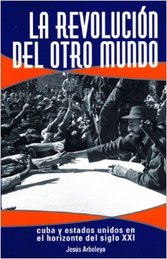
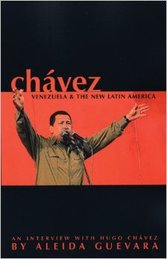
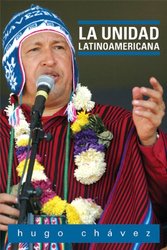
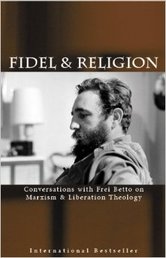
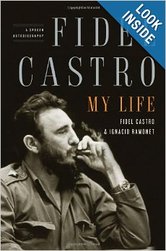
 RSS Feed
RSS Feed
